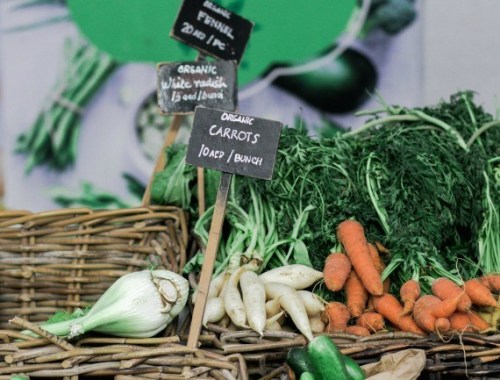
The Impact of Flooring: Choosing the Right Material
When it comes to designing or renovating your home, flooring is a foundational element. It significantly influences both the aesthetics and functionality of your space. The right flooring not only enhances the visual appeal of your home, but it also adds to the comfort and practicality. Given the myriad of flooring options available today, it can be overwhelming to choose the right material, but with a little help, it can be made easier.
Understanding the Importance of Flooring
Serving as the foundation of your home’s interior, flooring sets the tone for your overall design and feel. It affects everything from the ambience to the maintenance needed; even the acoustics of a room can be affected. Therefore, it’s important to choose the right material to create a cohesive and practical living environment.
Solid Wood Flooring
Solid wood flooring has a classic and elegant look that complements a variety of interior styles. With the proper care, they can last for decades and can be refinished multiple times. This allows you to remove any scratches and restore them to their original beauty; making them incredibly durable. There’s also a wide range of designs available due to the different wood species like oak, maple, cherry and walnut along with unique grains and colours.
However, solid wood flooring is one of the more costly options; both in terms of material and installation. They’re susceptible to scratches from pets or furniture and may warp or swell if exposed to moisture, which wood is naturally very susceptible to.

Engineered Wood Flooring
Made from multiple layers of wood pressed together, engineered wood flooring is more stable and less prone to warping and swelling then solid wood. It can be installed in areas where solid wood can’t; think basements and over concrete subfloors. Additionally, it offers the same visual appeal as solid wood as it has a top layer of real wood veneer.
The cons of engineered wood flooring, however, includes the cost. While it’s generally less expensive that solid wood, it can still be pricier than other flooring materials. Additionally, it can only be refinished once or twice; this depends on the thickness of the top veneer.
Laminate Flooring
Laminate flooring can mimic the appearance of natural materials for a fraction of the cost, making it a budget-friendly alternative to wood flooring. It’s also a DIY-friendly option, often featuring a click-and-lock installation system that can be easy to install by yourself. Also saving you money as you won’t need to hire a professional. Laminate is also quite durable; it’s resistant to scratches, dents and fading.
Unfortunately, laminate can’t be refinished, meaning it needs to be replaced once it’s worn out. It’s also susceptible to moisture damage, so you should keep it out of areas prone to high moisture levels.
Vinyl Flooring
The water resistance of vinyl flooring makes it ideal for areas prone to spills and moisture. Like laminate, vinyl is another budget-friendly option that can replicate the appearance of wood, stone and tile. It’s printed images are often higher quality in comparison to laminate.
However, vinyl flooring can be damaged by heavy objects denting it. Direct sunlight can also cause fading over time.

Parquet Flooring
The aesthetic appeal of parquet flooring is the key feature as it comes in an array of patterns such as herringbone, chevron and basket weave. It’s intricate patterns and designs add a touch of sophistication and artistry to any room. Because it’s made from small pieces of wood, parquet floors are quite durable too.
Due to the complexity of its intricate patterns, parquet floors require professional installation, which can be costly. Regular maintenance is also necessary to keep its beautiful appearance.
Carpet Flooring
Carpet provides a warm and comfortable surface to walk on. Its plushness helps with thermal insulation and reduces noise too. Plus, there’s a large variety of colours, textures and patterns to suit any space.
The cons of carpet are that it’s prone to staining, showing wear and tear over time. It also needs frequent vacuuming along with the occasional deep clean as it can harbour allergens and dirt.
Cork Flooring
This eco-friendly flooring is made from renewable resources. It’s also comfortable to walk on, providing some insulation and absorbing sound.
But it can be damaged by sharp objects as it’s prone to dents and scratches. Plus, it’s not suitable for damp areas due to its sensitivity to moisture.
Bamboo Flooring
Bamboo is another sustainable resource as it grows quickly. It’s harder than most wood species, whilst being resistant to moisture and insects. Plus, it offers a unique, contemporary look to your space.
Despite its hardness, bamboo can still be scratched by sharp objects and is still sensitive to humidity changes. Meaning it can expand or contract with humidity fluctuations.

Room-by-Room Flooring Guide
Living Room: Solid wood, engineered wood, parquet, laminate and cork are the recommended materials to use in the living room. This is because these materials offer a blend of comfort, durability and aesthetic appeal. Making them ideal for spaces where you entertain guests and relax.
Kitchen: Vinyl and laminate are recommended because they’re water-resistant materials and easier to clean.
Bathroom: Vinyl flooring is recommended as the bathroom is a moisture-heavy area. You want flooring that can withstand water without damage.
Bedroom: Carpet, cork, solid wood and engineered wood are perfect for the bedroom. This is due to the comfort and warmth that comes with these materials.
Dining Room: Solid wood, engineered wood, parquet and laminate offer elegance and durability to these spaces. They can handle spills and heavy furniture too.
You May Also Like

Can You Safely Swim with a UTI? What You Need to Know
September 18, 2024
4 Ways to Eat Organically for Less
October 14, 2019

